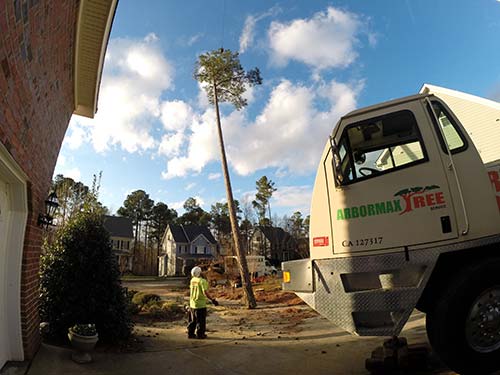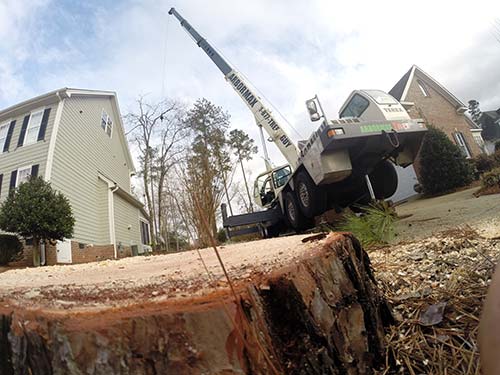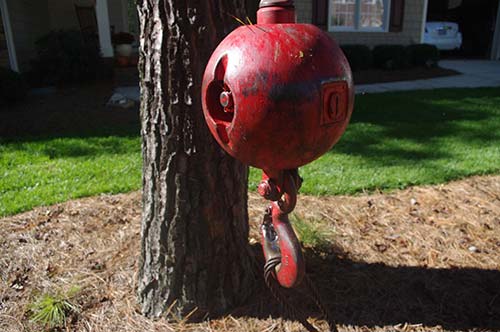
We are proud to have all of our operators certified by National commission of Certified Crane operators (NCCCO). It takes years of experience and training to be able to obtain a certification. Removing trees with a crane is more than pulling levers and swinging logs. It is a very technical task that requires extremely skilled operators. We like to say that it is half art and half science. Which it really is. Please take a minute to watch some of our videos that show us effortlessly removing dangerous and unwanted trees.
The process
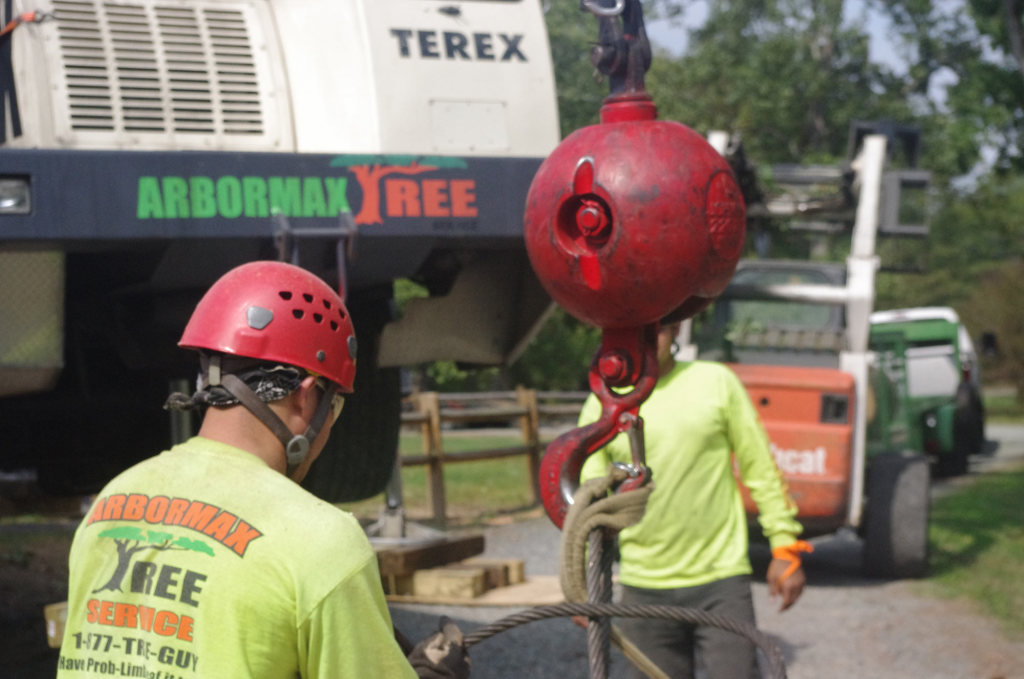
Step 1
– Find the best spot to set the crane up. Once the crew arrives on site they will conduct a pre-work jobsite meeting. During this meeting they will identify the tree(s) that are to be removed. Once the size and weight of each tree has been calculated the crew will establish a maximum safe working radius for the crane. Then they will find a spot within that radius to set it up. A multitude of factors will be considered when determining which location is best. Overhead obstacles, distance from the tree and distance from the landing zone where the trees will be lowered into and of course the space needs to be big enough to accommodate the footprint of the crane.
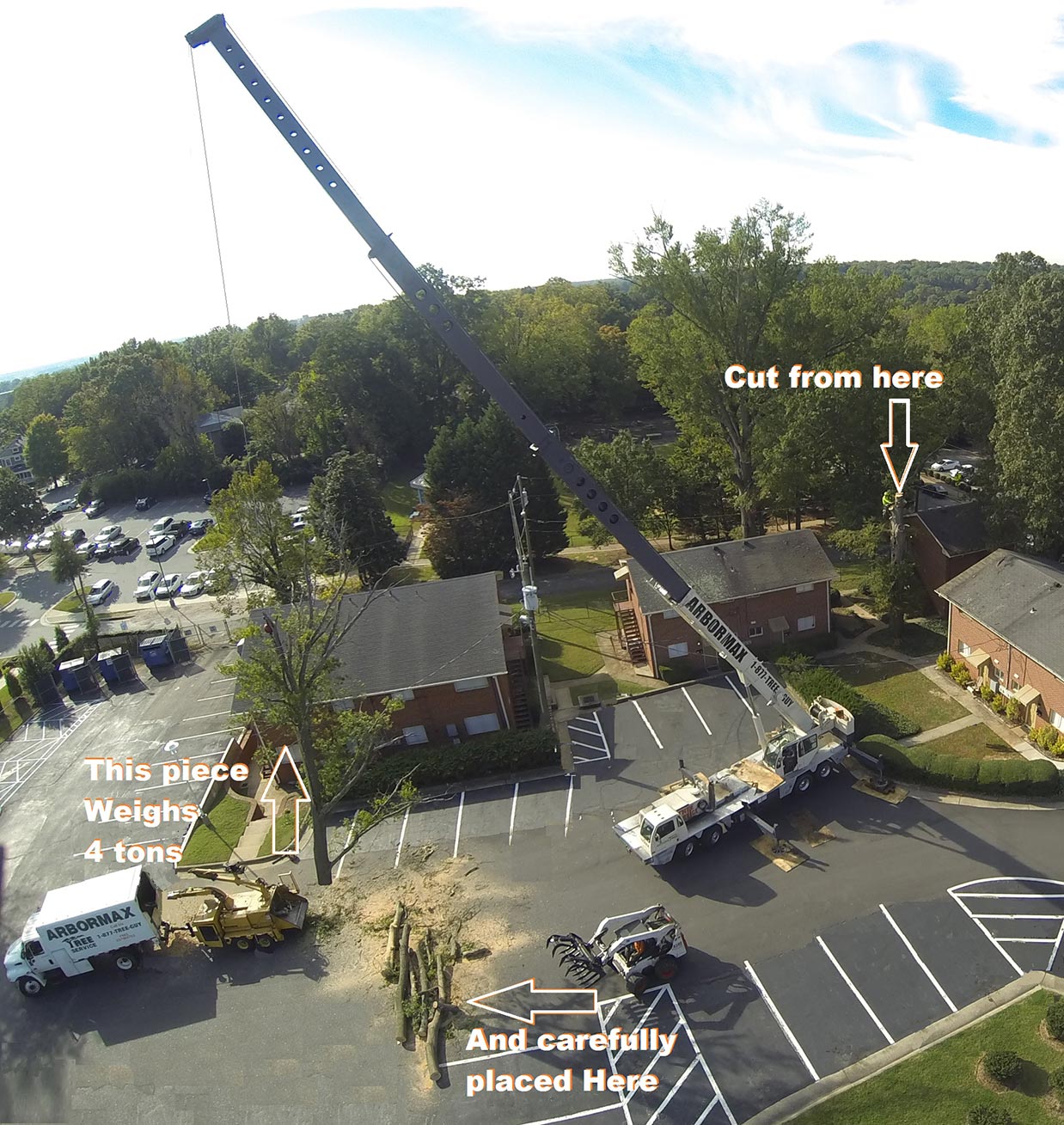
Step 2
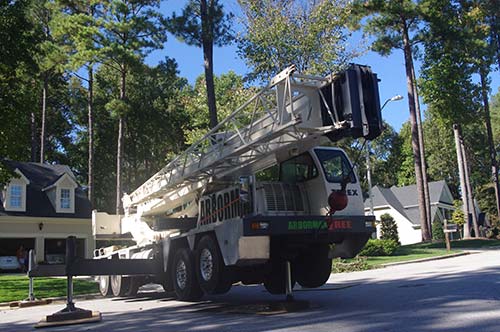 Set the crane up and level it. The crane operator will drive the crane into place once the setup location has been determined. Everyone usually works as a team to help guide the crane in and place the mats and timbers that the crane will stand on. Plywood, 6×6 wood beams, steel mats and other cribbing will be used to provide the crane with a sturdy base to work from. The crane must be perfectly level. This will ensure that the crane is stable during operation. The entire set up process usually takes about 20-30 minutes. That is actually longer than it takes to remove most trees with the crane.
Set the crane up and level it. The crane operator will drive the crane into place once the setup location has been determined. Everyone usually works as a team to help guide the crane in and place the mats and timbers that the crane will stand on. Plywood, 6×6 wood beams, steel mats and other cribbing will be used to provide the crane with a sturdy base to work from. The crane must be perfectly level. This will ensure that the crane is stable during operation. The entire set up process usually takes about 20-30 minutes. That is actually longer than it takes to remove most trees with the crane.
Step 3
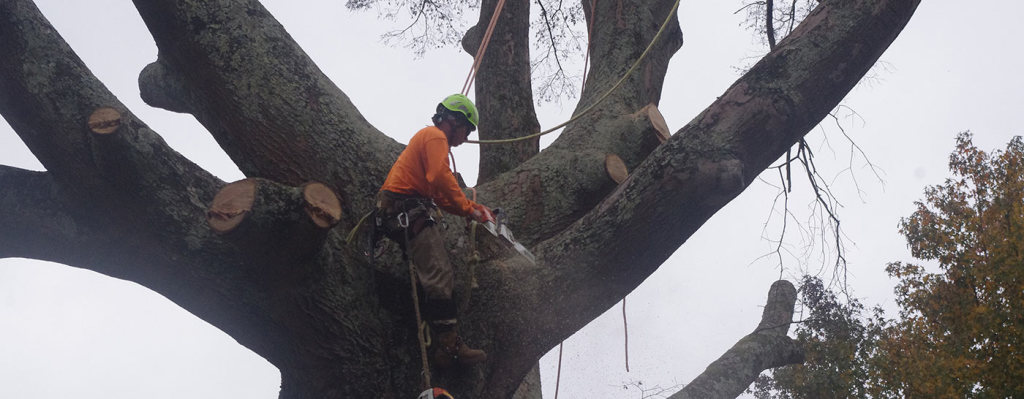 Every tree is unique and has a different set of circumstances that require a different approach. That’s why the tree climber and crane operator formulate a detailed lift plan for each tree prior to starting. Multipple things must be taken into consideration and included in the plan such as the weight of each piece, the pint where the strap/cable of the crane will be attached, the spots to make the cuts, the growth pattern and angle of the tree, the size of the are where the pieces will be lowered into and the amount of weight that the crane can lift at that distance. Both the tree climber and crane operator must be able to accurately estimate the weight of each piece that is going to be cut. If the piece is too large and exceeds the cranes maximum capacity at that distance it could cause the crane to tip over. The angle that trees and limbs grow will vary greatly, a large Cottonwood with horizontal branches will require a different rigging and cutting techniques than a vertical pine or spruce tree will.
Every tree is unique and has a different set of circumstances that require a different approach. That’s why the tree climber and crane operator formulate a detailed lift plan for each tree prior to starting. Multipple things must be taken into consideration and included in the plan such as the weight of each piece, the pint where the strap/cable of the crane will be attached, the spots to make the cuts, the growth pattern and angle of the tree, the size of the are where the pieces will be lowered into and the amount of weight that the crane can lift at that distance. Both the tree climber and crane operator must be able to accurately estimate the weight of each piece that is going to be cut. If the piece is too large and exceeds the cranes maximum capacity at that distance it could cause the crane to tip over. The angle that trees and limbs grow will vary greatly, a large Cottonwood with horizontal branches will require a different rigging and cutting techniques than a vertical pine or spruce tree will.

Step 4
This is when fun begins. After the tree climber ties his support line into a place above the ball of the crane he will tell the operator to lift him into place. The crane operator will then hoist him to a predetermined spot to connect the crane ball to the tree with a high strength nylon strap or steel cable. Once hooked, the crane operator will apply tension to the tree. Prior to moving, the tree climber will make sure the connection is secure. If it is he will maneuver his way into place and prepare to cut the tree. Once in place he will secure himself to the tree with a steel corded safety lanyard and a secondary point of attachment. After he double checks his attachment he will give and get the ready signal from the operator. After he receives the signal he will cut through the tree. The crane operator has to watch several things at one time. He will have his eye on the climber, the top of the tree and his surroundings all at once. Every little movement of the trees canopy and each sound of the chainsaw will affect the way the crane operator reacts to the piece that is being cut. Once the piece is cut completely the operator will gracefully maneuver it through the air and gently lay it down in the landing zone.
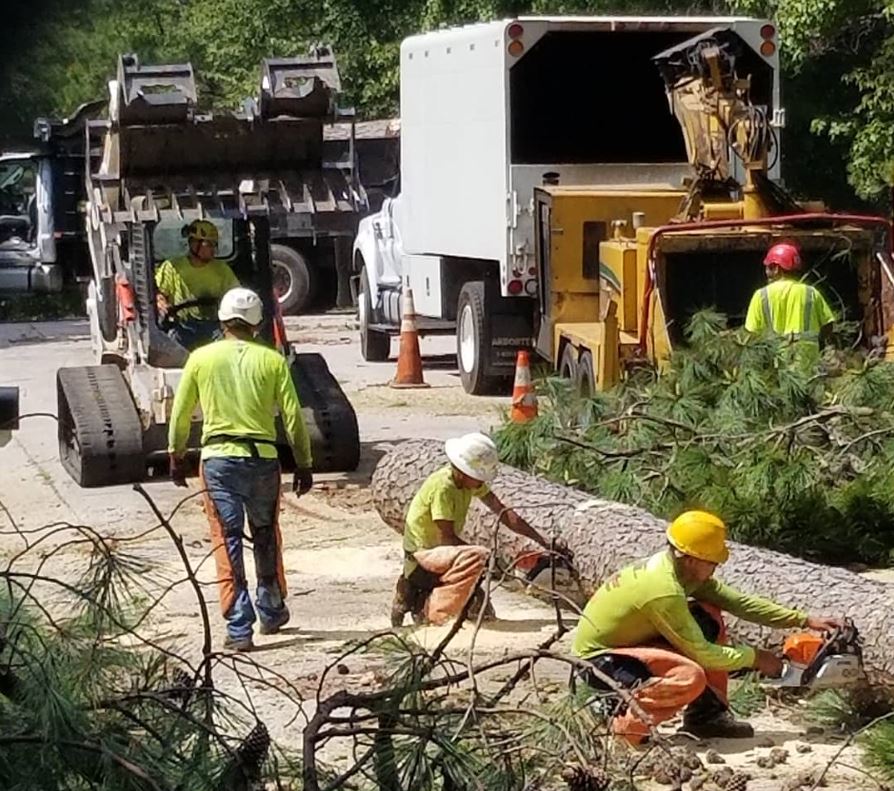
Step 5
Once in the landing zone our ground operations specialists will unhook the strap or cable and signal the crane operator to send it back to the tree climber for the next piece. Then they will attack the piece like a pack of rabid termites with chainsaws. Different pieces will be processed differently. The limbs that are smaller than 12 inches in diameter will be fed into the chipper and turned into mulch. The pieces that are larger than 12 inches will be placed on a separate truck.
Step 6
Hook, cut, repeat until all unwanted trees have disappeared.
